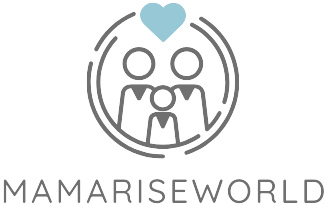Table of Contents
ToggleNavigating the world of higher education can feel like trying to find a needle in a haystack—if that needle were a college acceptance letter. Enter the College Board, the organization that’s been helping students and families tackle the college admissions process since the dawn of time (or at least since 1900). With tools like the SAT and Advanced Placement programs, it aims to level the playing field, making the journey to college a little less like a rollercoaster and a bit more like a well-planned road trip.
But let’s face it: the College Board isn’t just about standardized tests and college readiness. It’s also about deciphering the fine print of financial aid and scholarships, which can sometimes feel like reading ancient hieroglyphs. Whether students are dreaming of Ivy League schools or local community colleges, understanding the College Board’s role can make all the difference in turning those dreams into reality.
Overview of College Board
The College Board plays a crucial role in the college admissions process. Established in 1900, this nonprofit organization aims to connect students with opportunities in higher education. It provides several important tools, including the SAT and Advanced Placement (AP) programs.
Students seek out the SAT for its ability to measure college readiness. The scores from this standardized test can influence admissions decisions at many institutions. Advanced Placement courses offer high school students the chance to earn college credit while still in secondary education. Schools offer AP classes in various subjects, enhancing students’ academic profiles.
Understanding financial aid is another critical area where the College Board assists families. It offers resources to demystify scholarship opportunities and federal aid options. Students can benefit from these tools, which guide them through different financial avenues available to fund their education.
Navigating the complex landscape of college choices becomes less daunting with the College Board’s extensive support. Many students reference its programs when developing their college lists and preparing for admissions tests. Resources like college planning tools and personalized checklists enhance students’ preparedness as they pursue their educational goals.
Advisors and educators often recommend using the College Board’s resources. They emphasize the importance of starting early in the planning process. With guidance from the College Board, students can effectively align their goals with suitable colleges, whether targeting Ivy League institutions or community colleges.
History of College Board

The College Board has a rich history that traces back to its establishment in 1900. This nonprofit organization seeks to connect students with higher education opportunities.
Founding and Early Years
Founded in 1900, the College Board initially aimed to streamline college admissions processes. Early on, it addressed challenges faced by institutions and students in evaluating academic readiness. Collaborating with various colleges, the organization established standardized testing methods, including the SAT, to promote fair admissions practices. In its first years, the College Board focused on providing guidance to high school students transitioning to higher education.
Major Milestones
Significant milestones define the trajectory of the College Board. In 1926, the introduction of the SAT transformed college admissions by offering a unified assessment tool. The development of Advanced Placement (AP) courses in the 1950s allowed high school students to earn college credits and showcase their academic rigor. Expansion continued through the 1990s and 2000s, as the College Board introduced more resources and services to support students, such as financial aid guidance. Today, it plays a crucial role in shaping college readiness and accessibility for millions of students.
Services Offered by College Board
The College Board provides a range of essential services to support students and families in the college admissions process. These services include standardized testing, college admissions resources, and advanced placement programs.
SAT and ACT Testing
The College Board administers the SAT, a standardized test designed to assess college readiness. Students often take this assessment in their junior or senior year of high school to enhance admissions prospects. Test scores can play a crucial role in college decisions, with many institutions using the SAT as a key metric. Several resources, including official practice tests and test-taking strategies, are available through the College Board’s website to help students prepare effectively.
College Admission Services
College admission services from the College Board guide students through the application process. These services include resources for creating college lists, personal statements, and interview preparation. Students can access tools to understand application timelines and requirements for different universities. Additionally, the College Board provides a platform for scholarship searches, enabling students to explore funding options that align with their needs. Families benefit from comprehensive information regarding college admissions processes.
Advanced Placement Programs
Advanced Placement (AP) programs offered by the College Board allow high school students to earn college credit for rigorous courses. Students can choose from a variety of subjects, demonstrating their mastery while still in high school. Successful AP exam scores can contribute to college applications, showcasing academic commitment and achievement. Many colleges and universities recognize AP scores for credit or advanced placement, reinforcing the importance of these programs in preparing for higher education. The College Board also supplies resources for AP teachers and students to enhance the learning experience.
Impact of College Board
The College Board plays a crucial role in shaping the educational landscape for students and institutions alike. Its initiatives foster higher education opportunities and streamline college admissions processes.
On Students
Students benefit significantly from the College Board’s resources. Access to the SAT provides a standardized measure of college readiness, simplifying admissions for many. AP courses offer high school students the chance to earn college credit, boosting their academic profiles and competitiveness. Guidance on financial aid helps families understand complex options, making college more accessible. Many students utilize planning tools offered by the College Board to organize college searches and application components. Comprehensive support eases the stress of college transitions, empowering students to make informed decisions about their future.
On Educational Institutions
Educational institutions gain from the College Board’s assessments and programs. SAT scores serve as a benchmark to evaluate student readiness, complementing admissions criteria. Data-driven insights help colleges understand applicant trends and demographics, informing recruitment strategies. AP courses enrich institutional offerings, attracting a diverse student body interested in rigorous academic experiences. Colleges often refer to College Board resources for financial aid and scholarship information, enhancing support for incoming students. Collaborative initiatives foster partnerships between institutions, broadening access to higher education and promoting equity across the educational system.
Criticisms and Controversies
The College Board faces various criticisms regarding its role in college admissions. Concerns often center around the use of standardized tests and their impact on students.
Standardized Testing Debate
Critics argue that standardized tests like the SAT do not accurately measure a student’s potential. Some studies suggest these tests may reinforce socio-economic inequalities. Universities increasingly question their reliance on SAT scores for admissions, recognizing a need for holistic evaluation processes. Additionally, test preparation resources often favor students from affluent backgrounds, skewing results. As a result, many institutions are moving towards test-optional policies, reflecting a shift in attitudes toward standardized assessments.
Accessibility Issues
Accessibility remains a significant concern for many families navigating college admissions. Geographic disparities affect students’ access to College Board programs and resources. Low-income students may struggle to pay for test preparation courses or associated fees, resulting in unequal opportunities. Moreover, students with disabilities highlight a lack of adequate accommodations during standardized testing. Educational equity advocates emphasize the need for the College Board to enhance its support for underserved populations. Improved outreach and financial assistance could help bridge these gaps and promote fairness in the admissions process.
Future of College Board
The College Board is adapting to the evolving landscape of higher education. Innovations in technology present opportunities to enhance the student experience. Increased use of digital resources may lead to improved accessibility for diverse learners. Plans for streamlining test administration aim to alleviate logistical challenges faced by students.
Expansion of online AP courses will likely provide greater flexibility and reach. Many students now prefer a hybrid learning model that blends in-person and online education. Accessibility features may continue to improve for students with disabilities, ensuring a more equitable testing environment.
Data-driven insights will guide the College Board in shaping its services. Continuous feedback from educators and students informs program updates and enhancements. As test-optional policies gain traction, the organization may shift focus to other aspects of college readiness.
Collaboration with colleges can enhance support for underserved communities. Partnerships with organizations focused on equity may facilitate broader access to resources. These alliances might also strengthen efforts to provide financial aid guidance.
Emphasis on mental health and wellness is becoming increasingly relevant. Programs focused on college planning could integrate support mechanisms for student well-being. Innovations in mental health resources may play a crucial role in future initiatives.
Sustained growth in college admissions outreach can help bridge gaps in information access. Strategies to educate families about financial aid options must continue to evolve. With holistic admissions processes on the rise, the College Board’s role remains pivotal in guiding students through these changes.
The future of the College Board lies in its commitment to equity and innovation. Adaptations to emerging trends promise to enhance the value and accessibility of its offerings for all students.
The College Board plays a pivotal role in shaping the college admissions landscape. Its resources empower students and families to navigate the complexities of higher education with greater confidence. As the organization adapts to changing educational needs and emphasizes equity, it remains committed to supporting all learners.
By providing essential tools like the SAT and AP programs, the College Board enhances college readiness and access. Its focus on financial aid guidance and innovative solutions ensures that students from diverse backgrounds have the opportunity to pursue their educational aspirations. As it continues to evolve, the College Board’s influence will be vital in fostering a more equitable and accessible higher education system for future generations.





